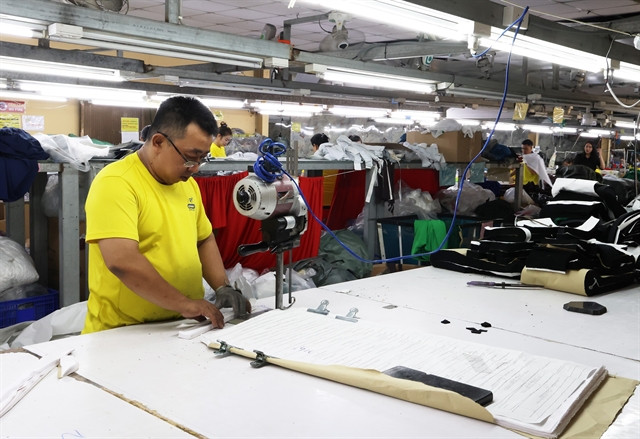Viêt Nam’s textile sector threads through record export momentum
According to the Vietnam Textile and Apparel Association (VITAS), the industry has expanded its export reach to 132 countries and territories this year, up from 104 in 2024.
Việt Nam’s textile and garment industry is charging into the final months of 2025 with robust momentum, aiming to meet an ambitious export target of US$47–48 billion, buoyed by strong order flows and growing global reach.
Since the start of the year, the industry has received encouraging signals. Export turnover in the first seven months of 2025 reached more than $26.33 billion, up $5.3 billion, or 9 per cent, compared with the same period in 2024. Many enterprises have already secured orders through the end of the year, sustaining growth through to the year’s close.
To reach the annual target, exports must average over $4 billion per month for the remainder of the year. While this presents a challenge, industry experts believe the goal is achievable given the current growth trajectory.
According to the Vietnam Textile and Apparel Association (VITAS), the industry has expanded its export reach to 132 countries and territories this year, up from 104 in 2024. Notably, Việt Nam is now exporting high-quality garment products to China, as well as strengthening its market presence in Russia, the Commonwealth of Independent States (CIS), and ASEAN nations.
In addition, Vietnamese enterprises are pursuing overseas investment projects in Mexico and Myanmar, with further expansion planned in India and Egypt. This broader footprint demonstrates Việt Nam’s strengthened position on the global textile and garment map.
Chairman of VITAS Vũ Đức Giang said that with growth exceeding 10 per cent, the sector had a solid foundation to meet its ambitious targets.
However, he stressed that continued success depended on enterprises making effective use of 17 new-generation free trade agreements (FTAs), while adapting to shifting trade dynamics and differing economic policies across major markets.
Simultaneously, the industry needed adaptive solutions to cope with evolving global conditions and regulatory frameworks, as some major economies remained divided over trade and economic policies.
Each enterprise must reinforce its supply chain linkages. Drawing lessons from tariff disputes and Europe’s stringent green-product standards, businesses were encouraged to proactively develop more sustainable and resilient value chains, Giang said.
Chairman of the Vietnam National Textile and Garment Group (Vinatex) Lê Tiến Trường emphasised the importance of wisely adjusting production plans in the coming months to safeguard jobs and ensure stable incomes for workers.
He also said that enterprises must adopt flexible financial management strategies to stay competitive, absorb rising input costs and adapt pricing mechanisms to retain orders in an increasingly challenging global market.
Shifting toward green and high-value production
To meet increasingly strict requirements in demanding markets, many garment enterprises are accelerating their transition towards green production and sustainable development.
Companies are investing in modern machinery, upgrading workers’ skills, and shifting from traditional cut‑make‑trim (CMT) models to higher‑value methods such as FOB (free on board), ODM (original design manufacturing), and OBM (original brand manufacturing).
These efforts not only raise product value but also strengthen Việt Nam’s competitiveness in global supply chains.
Trường said that his group’s member companies were striving to maximise existing production capacity in order to meet their export targets.
Key measures included optimising machinery and equipment efficiency, boosting productivity and tightening cost control to reduce resource consumption.
At the same time, enterprises were developing niche products to create unique value, strengthening the link between research and development and actual market orders and promoting digital transformation to enhance governance.
Vinatex had set a consolidated revenue target of more than VNĐ18.31 trillion for 2025—equivalent to last year’s level—alongside a pre‑tax profit goal of VNĐ910 billion, a year‑on‑year increase of 9 per cent, Trường told daidoanket.vn.
To achieve these targets, his group would focus on stabilising its export markets—particularly in the US, Japan, and the EU—while also exploring new and emerging markets.
VITAS chairman Vũ Đức Giang said despite challenges from increasingly strict US tariff policies and global trade uncertainties, Việt Nam’s textile and garment exports still had significant room for growth. He affirmed that the industry was fully capable of reaching the $48 billion export milestone this year.






